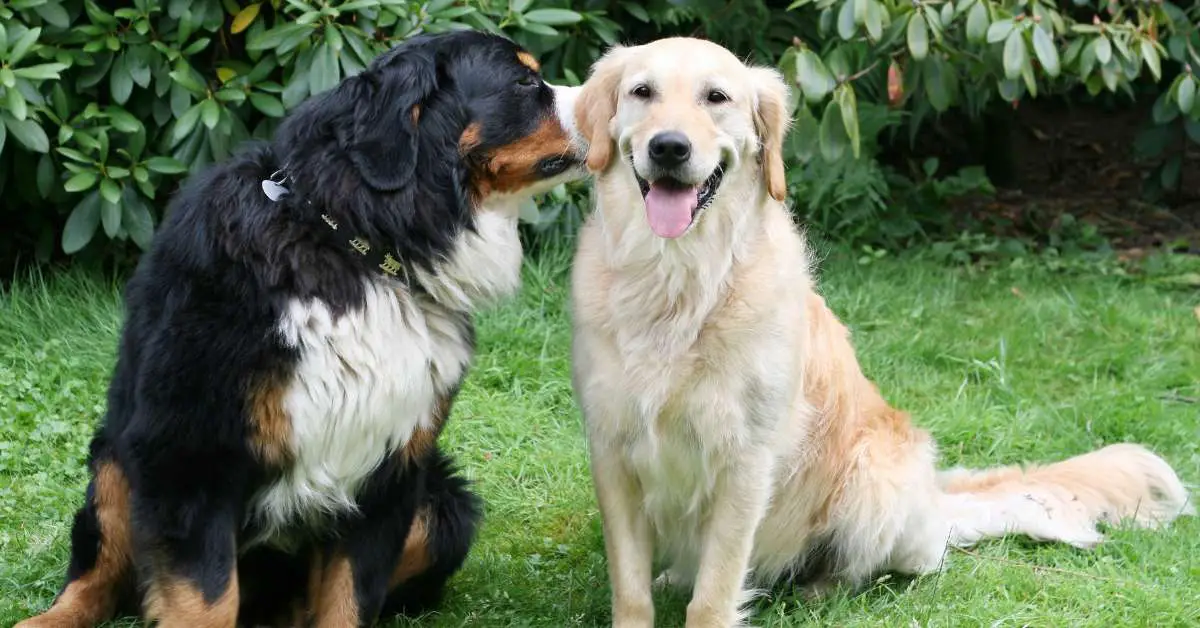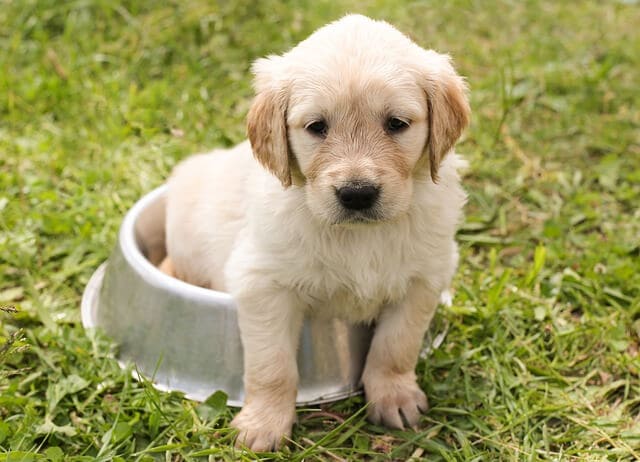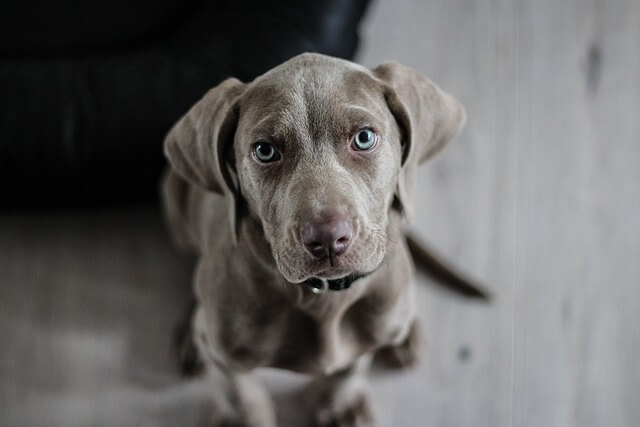Infected Dog Glands: Signs, Causes and How You Can Treat

Did you ever ponder over the little, unnoticeable glands within your dog’s body and their hidden secrets?
Dog health is like a puzzle, and these small parts are important for keeping everything balanced.
However, when infected, they can pose challenges for both pets and their vigilant owners.
Here, we’ll explore the all details about infected dog glands. All signs, causes, and treatments, all to ensure our furry friends stay happy and healthy.
Key Takeaways:
- Spot signs early – scooting, licking, odor or behavior changes signal potential infected anal glands.
- Maintain health with a fiber-rich diet, regular exercise, and consistent grooming practices.
- Approach home expression cautiously; seek professional guidance to avoid injury or infection.
- Prioritize regular check-ups, especially for susceptible breeds, ensuring proactive care for optimal anal gland health in your dog.
What Are Anal Glands and What is Their Purpose in Dogs?
Anal glands, also known as anal sacs, are small, sac-like structures located on either side of a dog’s anus. These glands play a significant role in a dog’s communication, marking territory, and maintaining hygiene.
Each gland has a duct that opens near the anus, allowing the release of a pungent, oily fluid.
The primary purposes of anal glands in dogs include:
1) Scent Marking:
Dogs use the secretions from their anal glands as a form of scent marking. When a dog defecates, a small amount of the fluid is released into the feces, leaving a unique scent marker.
This scent is a form of communication, conveying information about the dog’s identity, gender, and even emotional state to other dogs in the area.
2) Territorial Communication:
Anal gland secretions are often used by dogs to mark their territory. By leaving these scent markers in specific locations, dogs communicate with other animals, establishing boundaries and conveying information about their presence.
3) Identification:
The scent produced by anal glands serves as a means of identification among dogs. When one dog sniffs another’s anal gland secretions, they can gather information about the dog’s age, health, reproductive status, and other important details.
4) Stimulation of Defecation:
During a bowel movement, the pressure exerted on the anal glands helps to express a small amount of fluid onto the feces. This is a natural part of the defecation process, ensuring that the anal glands are emptied regularly.

While the anal glands serve important functions, they can sometimes become a source of health issues in dogs. Problems such as impaction, infection, or abscess formation may occur when the anal glands fail to empty properly.
Some dogs, especially those with certain anatomical characteristics or health conditions, may be more prone to anal gland issues.
Regular veterinary check-ups and awareness of your dog’s behavior and hygiene can help in maintaining the health of their anal glands.
In cases of discomfort or signs of anal gland problems, prompt veterinary attention is crucial to address the issue and prevent potential complications.
Causes of Anal Gland Problems
Anal gland problems in dogs can be a source of discomfort and concern for both pets and their owners.
Understanding the causes behind these issues is crucial for effective prevention and management. Here are some common factors that contribute to anal gland problems in dogs:
1) Breed Predisposition:
Certain dog breeds are more prone to anal gland issues due to their anatomy. Breeds such as Bulldogs, Cocker Spaniels, and Chihuahuas, among others, may experience higher incidence rates.
2) Dietary Factors:
The consistency of a dog’s stool is closely linked to the health of their anal glands. Dogs on a diet lacking in fiber may produce softer stools, leading to inadequate pressure on the glands during bowel movements.
This can result in poor emptying of the glands and an increased risk of problems.
3) Weight Issues:
Overweight or obese dogs may experience increased pressure on their anal glands. Maintaining a healthy weight through a proper diet and regular exercise can help alleviate this pressure and reduce the risk of gland issues.
4) Infections and Inflammation:
Infections or inflammation of the anal glands can be caused by various factors, including bacteria, allergies, or underlying health conditions. Inflammation may obstruct the normal emptying of the glands, leading to impaction or infection.
5) Poor Gland Emptying:
Some dogs may have difficulty naturally expressing their anal glands during bowel movements. This can be due to factors such as weak muscles or an abnormal gland position. In these cases, the glands may become impacted and prone to infection.
6) Anal Sacculitis:
Anal sacculitis, or inflammation of the anal sacs, can contribute to anal gland problems. This condition can be caused by bacterial infections or other inflammatory issues, leading to discomfort and potential complications.
7) Allergies:
Dogs with allergies, whether food-related or environmental, may experience inflammation that can affect the anal glands. Identifying and managing allergic triggers can help prevent recurrent gland problems.

Signs of Impacted or Infected Anal Glands
Recognizing the signs of impacted or infected anal glands in your dog is crucial for prompt intervention and preventing further complications.
Here are common indicators that your furry friend may be experiencing issues with their anal glands:
1) Scooting:
One of the most noticeable signs is when a dog scoots or drags their hindquarters along the ground. This behavior is an instinctive attempt to relieve discomfort or irritation in the anal area.
2) Excessive Licking:
Dogs may excessively lick their hindquarters due to the discomfort caused by impacted or infected anal glands. Pay attention if you observe a sudden increase in this behavior.
3) Foul Odor:
Impacted or infected anal glands often produce a distinct, unpleasant odor. If you notice a strong, foul scent around your dog’s hindquarters, it could be indicative of an anal gland issue.
4) Discomfort or Pain:
Dogs with anal gland problems may display signs of discomfort, such as difficulty sitting, reluctance to be touched near the tail, or vocalizing when their hindquarters are touched.
5) Swelling or Redness:
Visible swelling, redness, or inflammation around the anus can be a sign of an issue with the anal glands. Carefully inspect this area for any abnormalities.
6) Changes in Defecation:
Straining during bowel movements or changes in the consistency of the stool can be linked to anal gland problems. Soft or loose stools may contribute to inadequate gland expression.
7) Visible Discharge:
In more severe cases, there may be visible discharge from the anal glands. This discharge can range from a thick, brown fluid to a bloody or pus-like substance.
8) Lethargy or Changes in Behavior:
Dogs experiencing discomfort from anal gland issues may exhibit changes in behavior, such as increased lethargy, irritability, or a reluctance to engage in usual activities.
How Do Anal Glands Become Infected?
Anal gland infections in dogs can occur due to various factors, and understanding the underlying causes is essential for effective prevention and management.
Here’s an overview of how anal glands may become infected:
1) Impaction and Poor Emptying:
Anal glands naturally produce a scent-marking fluid, and in healthy dogs, these glands are expressed during bowel movements.
However, if the glands do not empty properly, the fluid can become thick and stagnant, leading to impaction. The trapped material creates an environment conducive to bacterial growth, increasing the risk of infection.
2) Bacterial Infections:
Bacteria can enter the anal glands, causing infections.
This can occur due to factors such as contaminated feces coming into contact with the glands, the introduction of harmful bacteria during licking or grooming, or an existing bacterial imbalance in the dog’s digestive system.
3) Allergies and Inflammation:
Dogs with allergies, whether food-related or environmental, may experience inflammation in various parts of their bodies, including the anal glands. Inflamed glands are more prone to infection.
Chronic inflammation can hinder the natural emptying of the glands, creating an environment conducive to infection.
4) Anatomy and Breed Predisposition:
The anatomical structure of a dog’s anal glands can contribute to infection risk. Breeds with specific anatomical characteristics, such as those with tightly spaced glands or small ducts, may be more predisposed to anal gland problems.
5) Underlying Health Conditions:
Certain health conditions, such as inflammatory bowel disease (IBD) or anal sacculitis, can contribute to the development of anal gland infections.
These conditions create an environment that is favorable for bacterial growth and may compromise the overall health of the anal glands.
6) Poor Diet and Stool Consistency:
Diet plays a crucial role in maintaining healthy bowel movements.
Dogs with diets lacking in fiber may produce softer stools, contributing to poor gland emptying. Inadequate pressure on the glands during bowel movements can result in retained fluid and an increased risk of infection.
7) Obesity:
Overweight or obese dogs may experience increased pressure on their anal glands, affecting their normal function. Keeping your dog at a healthy weight with the right diet and regular exercise is key to minimizing the chances of anal gland issues.

Understanding these potential causes can aid in preventing anal gland infections in dogs.
Regular veterinary check-ups, maintaining a balanced diet, and addressing any underlying health issues promptly are key aspects of keeping your dog’s anal glands healthy.
If you suspect your dog has an anal gland infection, seek prompt veterinary attention for proper diagnosis and treatment.
Types of Anal Gland Problems in Dogs
Anal gland problems in dogs can manifest in various forms, ranging from mild discomfort to more serious conditions.
Here are some common types of anal gland problems in dogs:
1) Anal Gland Impaction:
This occurs when the anal glands do not empty properly during bowel movements, leading to the thickening of the fluid inside the glands. Impacted anal glands can cause discomfort, swelling, and may predispose the dog to infections.
2) Anal Gland Infections (Anal Saculitis):
Infections can occur when bacteria enter the anal glands, often as a result of impaction or an existing bacterial imbalance. Anal gland infections can lead to inflammation, pain, and the formation of abscesses if left untreated.
3) Anal Gland Abscess:
An untreated or severe anal gland infection can progress to the formation of an abscess. Abscesses are pockets of pus that develop within the anal glands, causing significant pain, swelling, and potential rupture.
4) Anal Gland Fistula:
A fistula is an abnormal opening that may develop between the anal glands and the surface of the skin. Anal gland fistulas can result from chronic inflammation or recurrent infections, leading to persistent drainage and discomfort.
5) Anal Gland Tumors:
While less common, tumors can develop within the anal glands. These tumors may be benign or malignant and can cause various symptoms, including swelling, pain, and changes in bowel habits.
6) Chronic Anal Gland Issues:
Some dogs may experience recurring problems with their anal glands, such as chronic impaction or infections. Chronic issues may require ongoing management and monitoring to prevent complications.
7) Anal Gland Rupture:
In severe cases, untreated anal gland abscesses can rupture, leading to the release of pus and bacteria into the surrounding tissues. Anal gland rupture is a painful condition that requires immediate veterinary attention.
8) Anal Gland Protrusion:
In rare instances, the anal glands may protrude from the anus, a condition known as anal gland prolapse. This can be caused by trauma, severe inflammation, or other underlying health issues.
Recognizing the type of anal gland problem is crucial for appropriate veterinary intervention. If you observe any signs of discomfort, scooting, excessive licking, or visible swelling around your dog’s anal area, it is important to consult with a veterinarian.
Early detection and proper treatment can help alleviate your dog’s discomfort and prevent more serious complications associated with anal gland problems.
Regular veterinary check-ups and maintaining good hygiene practices are essential for overall anal gland health in dogs.
What are the potential complications of an infected anal gland in dogs?
An infected anal gland in dogs, if left untreated, can lead to several potential complications. It’s crucial to be aware of these complications and seek prompt veterinary attention if you suspect your dog has an anal gland infection.
Here are some potential complications:
1. Abscess Formation:
An anal gland infection can progress to the formation of an abscess. This is a localized collection of pus within the gland, causing swelling, pain, and redness. Abscesses can rupture, leading to further complications.
2. Anal Gland Fistula:
Chronic or severe infections may result in the formation of an abnormal opening, known as a fistula, between the anal gland and the skin surface. Anal gland fistulas can cause persistent drainage and may be challenging to resolve without intervention.
3. Cellulitis:
The infection can spread to the surrounding tissues, causing cellulitis. Cellulitis is inflammation of the connective tissue, resulting in redness, heat, and swelling in the affected area.
4. Bacterial Systemic Infection:
In severe cases, bacteria from an infected anal gland can enter the bloodstream, leading to a systemic infection. This can have serious consequences for the overall health of the dog, potentially affecting vital organs.
5. Anal Gland Rupture:
If an anal gland abscess is not treated, it may rupture, releasing pus and bacteria into the surrounding tissues. Anal gland rupture is a painful condition that requires immediate veterinary attention to prevent further complications.
6. Chronic Anal Gland Issues:
Untreated or recurrent anal gland infections can lead to chronic issues, including repeated infections, impactions, or inflammation. Managing chronic problems may require long-term care and monitoring.
7. Discomfort and Pain:
Anal gland infections are inherently uncomfortable for dogs. Persistent pain and discomfort can negatively impact their quality of life and may result in changes in behavior and activity levels.
8. Secondary Health Issues:
Dogs with anal gland problems may develop secondary health issues, such as skin infections or irritation in the perianal area. Excessive licking and biting can lead to hair loss and further skin complications.

Given the potential complications associated with infected anal glands, it’s crucial for dog owners to be vigilant and seek veterinary attention at the first signs of discomfort or abnormal behavior.
Early intervention can often prevent the progression of infections and reduce the risk of complications.
Regular veterinary check-ups, good hygiene practices, and a balanced diet are essential components of maintaining the overall health of a dog’s anal glands.
Tips for Keeping Your Dog’s Anal Glands Healthy
Maintaining the health of your dog’s anal glands is an important aspect of overall canine care. Here are some tips to help keep your dog’s anal glands healthy:
1. Balanced Diet:
Ensure your dog is on a well-balanced diet that includes adequate fiber. A diet rich in fiber can help regulate bowel movements and promote natural emptying of the anal glands during defecation.
2. Regular Exercise:
Regular physical activity is not only essential for your dog’s overall health but also contributes to proper bowel function. Exercise helps maintain a healthy weight and supports the natural expression of anal gland secretions.
3. Proper Hydration:
Encourage your dog to stay well-hydrated. Sufficient water intake helps maintain the moisture content of the stool, which can aid in the natural emptying of the anal glands during bowel movements.
4. Regular Gland Expression:
Some dogs may require manual expression of their anal glands, especially if they are prone to impaction. Consult with your veterinarian on the proper technique and frequency, as excessive or improper expression can lead to complications.
5. Routine Veterinary Check-ups:
Include an anal gland check as part of your dog’s routine veterinary examinations. Your veterinarian can assess the health of the anal glands and address any issues early on.
6. Monitor Stool Consistency:
Pay attention to your dog’s stool consistency. Stools that are too soft or too hard may contribute to anal gland problems. Adjust the diet accordingly with your veterinarian’s guidance.
7. Regular Grooming:
Keep the perianal area clean and groomed. Regular grooming can help prevent matting of fur and reduce the risk of bacteria getting trapped in the anal glands.
8. Address Allergies:
If your dog has allergies, work with your veterinarian to manage them effectively. Allergic reactions can contribute to inflammation, which may affect the anal glands.
9. Weight Management:
Maintain a healthy weight for your dog through proper diet and exercise. Obesity can exert excess pressure on the anal glands and may contribute to gland-related issues.
10. Be Attentive to Behavioral Changes:
Watch for signs of discomfort, scooting, excessive licking, or changes in behavior that may indicate anal gland problems. Promptly consult with your veterinarian if you observe any concerning signs.
By incorporating these tips into your dog’s care routine, you can contribute to the well-being of their anal glands and reduce the risk of complications.
Remember to tailor these recommendations based on your dog’s individual needs and consult with your veterinarian for personalized advice.
Do Dogs Need to Have Their Anal Glands Expressed?
Not all dogs need to have their anal glands expressed regularly, and the necessity for this procedure varies from one dog to another. Anal gland expression is a natural process that should occur during a dog’s regular bowel movements.
In some cases, however, dogs may experience issues with their anal glands, leading to the need for manual expression.
Here are factors to consider regarding the need for anal gland expression in dogs:
1. Natural Expression:
Ideally, a dog’s anal glands should naturally express during bowel movements as firm stool passes over the glands. In healthy dogs, this process occurs without intervention.
2. Breed and Size:
Smaller breeds and certain dog breeds with specific anatomical characteristics may be more prone to anal gland issues. Breeds such as Bulldogs, Cocker Spaniels, and Chihuahuas are known to have a higher predisposition.
3. Weight and Diet:
Obesity can contribute to anal gland problems, as excess weight may put pressure on the glands. Additionally, a diet lacking in fiber can result in soft stools, reducing the natural expression of the anal glands during bowel movements.
4. Symptoms of Anal Gland Issues:
Dogs that display symptoms of anal gland problems, such as scooting, excessive licking of the perianal area, or signs of discomfort, may require manual expression. These symptoms may indicate impaction, infection, or other issues.
5. Chronic Issues:
Some dogs may experience recurrent problems with their anal glands, requiring periodic expression. This is often the case for dogs with chronic anal gland impaction or infection.
6. Veterinary Guidance:
The decision to express a dog’s anal glands should be based on veterinary advice. A veterinarian can assess the dog’s overall health, and anal gland condition, and provide guidance on whether manual expression is necessary.

It’s important to note that expressing anal glands without a specific reason or professional guidance can lead to complications. Improper expression can cause injury or introduce bacteria into the area, potentially worsening the situation.
If you notice signs of discomfort, scooting, or persistent issues in the anal area, it’s best to consult with your veterinarian.
Your vet can evaluate the situation, recommend appropriate interventions, and guide you on whether expressing the anal glands is necessary for your dog’s specific circumstances.
How to Express Your Dog’s Anal Glands
Expressing your dog’s anal glands should ideally be done by a professional, such as a veterinarian or a groomer.
However, if you’re considering expressing your dog’s anal glands at home, it’s crucial to proceed with caution and only attempt it if you’re confident and have received guidance from your veterinarian.
Keep in mind that improper expression can lead to injury or the introduction of bacteria, worsening the situation.
Here is a general guide on how to express your dog’s anal glands:
Caution: Before attempting this, consult with your veterinarian to ensure it is necessary and to receive proper instructions. If you’re uncomfortable or uncertain, seek professional help.
Materials:
- Latex or rubber gloves
- Clean, disposable wipes
- Towels or disposable pads
Procedure:
- Wash Your Hands:
- Start by thoroughly washing your hands and wearing latex or rubber gloves.
Positioning:
- Place your dog in a comfortable position. You may need someone to help hold the dog still if necessary.
Locate the Anal Glands:
- The anal glands are located on either side of your dog’s anus, at approximately 4 and 8 o’clock positions. They feel like small, firm, pea-sized structures.
Expressing the Glands:
- You can use one of two methods: external or internal.
External Method:
- Position yourself behind your dog.
- Place a gloved finger on either side of the anus.
- Gently squeeze and lift upwards to encourage the fluid to be expressed.
Internal Method:
- Lubricate a gloved finger with water-soluble lubricant.
- Gently insert your finger into the rectum.
- Feel for the anal glands and apply gentle pressure to express the fluid.
Clean-Up:
- After expressing the glands, use clean, disposable wipes to clean the area around the anus. Dispose of the gloves and wipes properly.
Monitor for Discomfort:
- Keep an eye on your dog for any signs of discomfort, and contact your veterinarian if there are concerns.
Important Considerations:
- Do not attempt anal gland expression without proper guidance.
- Be gentle to avoid injury or causing further discomfort to your dog.
- If you encounter resistance or if the process seems difficult, stop immediately and consult your veterinarian.
- Expressing anal glands should not be a routine procedure but rather done when recommended by your veterinarian due to specific issues.
Remember, expressing anal glands can be a delicate and sensitive procedure, and it’s best left to professionals. If you are unsure or uncomfortable, seek veterinary assistance to ensure the safety and well-being of your dog.
Treating Anal Gland Issues in Dogs
Treating anal gland issues in dogs requires a tailored approach based on the specific problem at hand. Here are general guidelines for addressing common anal gland issues:
1. Professional Expression:
If your dog’s anal glands are impacted or infected, a veterinarian can manually express the glands. This is a common and effective procedure to relieve discomfort and remove impacted material.
2. Antibiotics:
In cases of anal gland infection or abscess, your veterinarian may prescribe antibiotics to combat bacterial infection. It’s essential to complete the full course of antibiotics as prescribed.
3. Warm Compresses:
Applying warm compresses to the affected area can help reduce inflammation and promote drainage. This is particularly beneficial for dogs with anal gland abscesses.
4. Topical Medications:
Your veterinarian may recommend topical medications or ointments to soothe the irritated area around the anus and promote healing.
5. Dietary Changes:
Adjusting your dog’s diet to include more fiber may help regulate bowel movements and prevent anal gland impaction. Consult with your veterinarian for dietary recommendations.
6. Weight Management:
If obesity is a contributing factor, your veterinarian may advise weight management strategies to reduce pressure on the anal glands.
7. Lifestyle Modifications:
Make necessary lifestyle changes, such as increasing exercise, to promote overall health and regular bowel movements.
8. Identification and Treatment of Underlying Causes:
If the anal gland issues are recurrent, it’s crucial to identify and address any underlying causes, such as allergies or gastrointestinal issues.
9. Surgical Intervention:
In severe cases or when anal gland problems persist, surgical options may be considered. This could involve removal of the anal glands (anal sacculectomy) in cases of chronic issues or recurrent infections.
10. Regular Veterinary Check-ups:
Schedule regular veterinary check-ups to monitor the health of your dog’s anal glands. Your veterinarian can identify potential issues early on and recommend appropriate interventions.
It’s important to note that home attempts at expressing anal glands may cause injury or worsen the situation if not done correctly. Always seek professional veterinary guidance for any concerns related to your dog’s anal glands.
If you observe signs of discomfort, scooting, or persistent issues in the anal area, consult with your veterinarian promptly. Timely intervention can prevent complications and contribute to the overall well-being of your dog.
FAQs
Q1: What are the common signs that my dog may have infected anal glands?
A: Look out for signs such as scooting, excessive licking of the perianal area, foul odor, swelling, and changes in behavior, as these may indicate issues with the anal glands.
Q2: How can I prevent my dog’s anal glands from becoming infected?
A: According to WebMD, maintaining a balanced diet with sufficient fiber, regular exercise to promote healthy bowel movements, and keeping the perianal area clean through regular grooming are essential preventive measures.
Q3: Can I express my dog’s anal glands at home, and how is it done?
A: According to the VCA Animal Hospital, expressing anal glands should ideally be done by a professional, but if necessary, your vet can provide guidance. However, it’s crucial to exercise caution, as improper expression can lead to injury or introduce bacteria.
Q4: What are the potential complications if I ignore signs of infected anal glands in my dog?
A: According to Akc.org, complications may include abscess formation, anal gland fistula, bacterial systemic infections, and chronic anal gland issues. Timely intervention is crucial to prevent these complications.
Q5: Are certain dog breeds more prone to anal gland problems?
A: According to the PetMD, Yes, some breeds, such as Bulldogs, Cocker Spaniels, and Chihuahuas, are known to be more predisposed to anal gland issues due to their specific anatomical characteristics. Regular veterinary check-ups are essential for these breeds.
Conclusion:
In conclusion, understanding and addressing infected anal glands in dogs is vital for ensuring the health and well-being of our furry companions.
By recognizing the signs, implementing preventive measures, and seeking prompt veterinary attention when needed, dog owners can navigate this common issue with confidence.
Remember, a proactive approach, regular check-ups, and a keen eye for your dog’s behavior are key to maintaining optimal anal gland health.
Stay informed, prioritize your dog’s comfort, and foster a strong partnership with your veterinarian for a happy and healthy canine friend.
